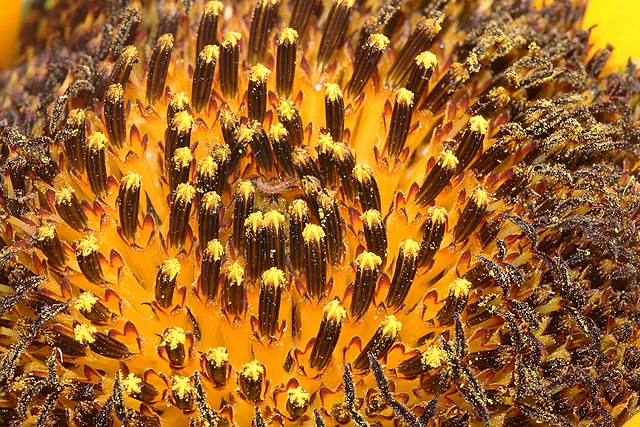Inflorescence
term used in botany to describe a cluster of flowers From Wikipedia, the free encyclopedia
An inflorescence is a flowering stem. The term is most used for a group or cluster of flowers arranged on a stem. An inflorescence is the reproductive portion of a plant; each plant bears its flowers in a specific pattern.




Whereas gymnosperms are mostly wind-pollinated, flowering plants are mostly pollinated by insects. There are some exceptions to this, for instance grasses are wind-pollinated. However, as a general rule, flowering plants rely on animals for their pollination.
Most flowers are pollinated by animals, usually insects. To be pollinated, a flower needs to be seen. Most insects have good colour vision, including vision in the ultra-violet (which humans do not have). That is the reason many flowers have attractive colours.
Sometimes there is just a close bunch of flowers (e.g. Antirrhinum) on a spike. Sometimes the inflorescence is so tight it looks like one single flower. What you see as a single daisy is actually made of several hundred tiny flowers packed together. This kind of inflorescence is called a pseudanthium ("false flower").
Advantages
The advantages of the inflorescence mode is all about reproduction compared to a single primitive flower of the Magnolia type.[1]
- Numbers
- There may be dozens or even hundreds of flowers in an inflorescence, with many seeds or fruits for each flowering.
- Pollination
- Increased pollination is an important bonus. Massing flowers together makes them more visible to pollinating insects and birds.
- Seed or fruit dispersal
- Dispersal by wind or animals is improved by having the flowers at the top end of a stem.
- A raceme
- A spike
- Catkin (racemose or spicate)
- A spadix
- Head (round)
- Umbel
- Compound capitulum
- Compound (triple) umbel
- Panicle
Related pages
References
Wikiwand - on
Seamless Wikipedia browsing. On steroids.







